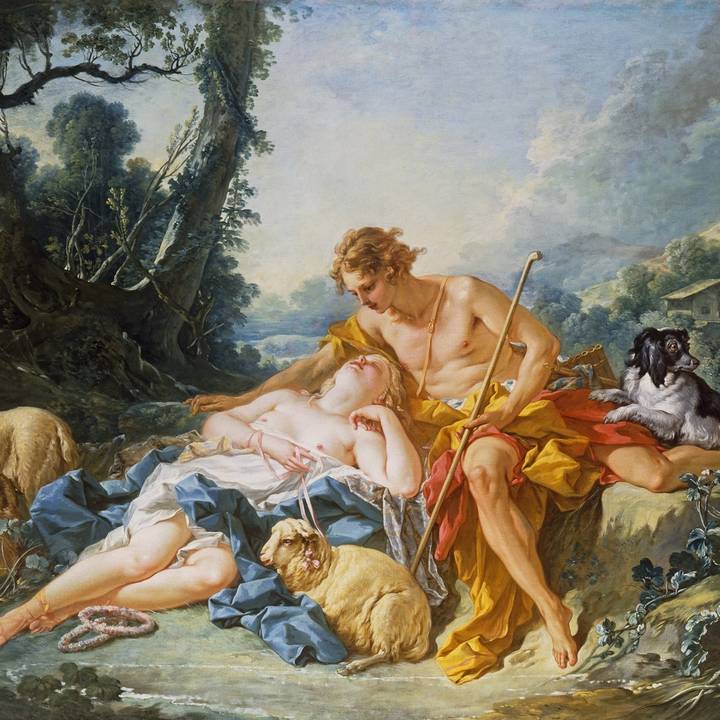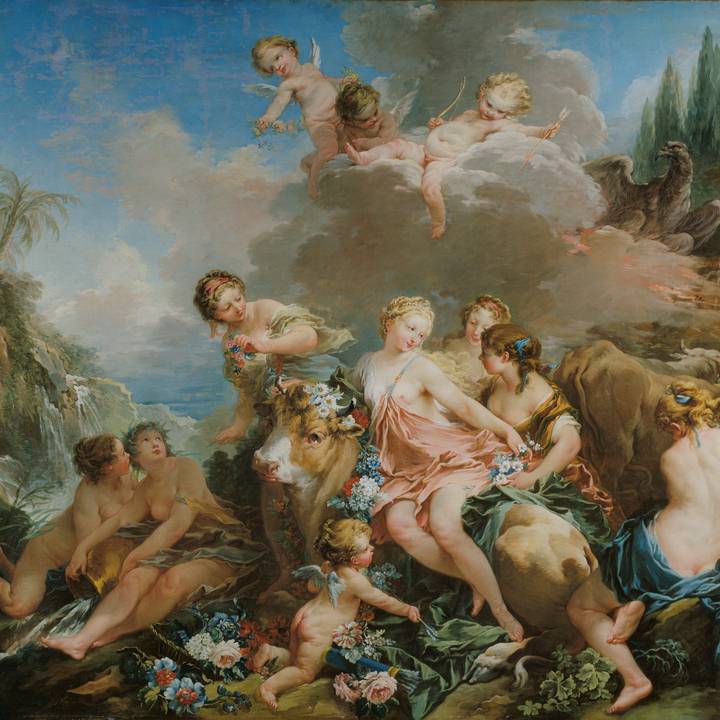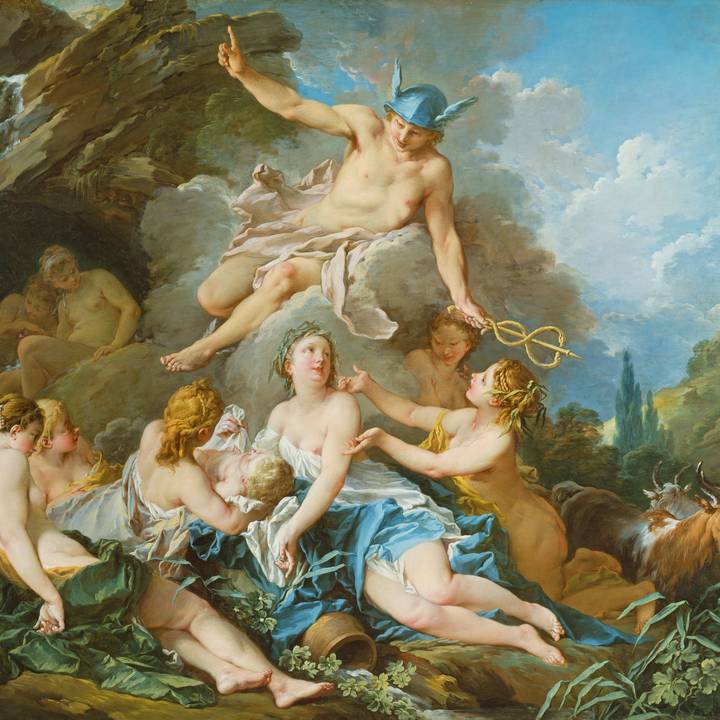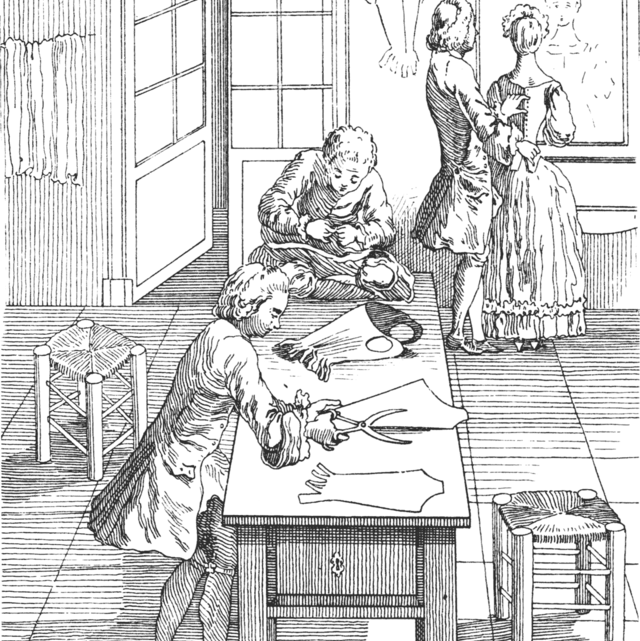Date: 1759
Materials: Oil on canvas
Measurements: 91 x 68 cm
Inv. No: P418
In 1745, a new mistress joined the court of King Louis XV. To the horror of many aristocratic observers, this role was, for the first time, filled by a daughter of the nouveau riche Parisian bourgeoisie.
Jeanne-Antoinette Poisson, known as "Miss Fish", had become Madame Le Normant d’Étoiles by 1742. By 1745, the enamored King created her as the Marquise de Pompadour, known as Madame de Pompadour, and installed her at court.
As with most love affairs, the first years were idyllic. But as their romantic relationship began to wane around 1750, Madame de Pompadour turned increasingly to the arts to help her fulfill her patriotic duty of entertaining the King.
Out of the four leading painters of the time- Carle Van Loo, Charles-Joseph Natoire, François Boucher, and Jean-Baptiste Pierre- it was Boucher’s imagination and appealing style that made him the ideal artist to help Madame de Pompadour realise her artistic vision. Her support was also essential in helping Boucher develop a grander style, allowing him to compete directly with Van Loo.
She became one of Boucher’s most prominent clients after the King himself and was one of his greatest patrons, which elevated him to prominence as the leading decorative painter of the day.
It helped that Boucher shared her thoroughly Parisian background, and his interest in opera and the latest fashions kept him well-informed which was an asset to Madame de Pompadour, who often felt isolated at court.
Her clear preference for Boucher showed in the number and variety of commissions she entrusted to him, including historical and religious works that challenged him to broaden his artistic range.
The trust that developed between the painter and his patron is evident in a series of portraits Madame de Pompadour commissioned from Boucher between 1750 and 1759.
Aware of her precarious position at court- especially after the end of her romantic relationship with the King became widely known-she was eager to project an image of confidence and loyalty, highlighting her continuing role as the King’s confidante.
Her portraits emphasised her friendship, loyalty, spiritual and intellectual qualities, and beauty and by March 1750, Boucher had completed his first portrait of Madame de Pompadour.
Madame de Pompadour valued Boucher’s ability to portray her in an attractive light rather than with strict realism, so, despite his liberal interpretation of her likeness, she went on to commission eleven more portraits from him.
This portrait (P418) is the last image Boucher painted of his distinguished patroness and demonstrates the iconography they developed together—an imagery with special significance to her close circle, including, most importantly, the King.
It celebrates her friendship with Louis, offering an exquisite depiction of a beautiful, fashionably dressed woman.
Unusually, this portrait shows her full face (she was typically depicted looking to the left), leaning elegantly, fan in hand, against a statue symbolizing friendship and platonic love.
This statue recalls the "Friendship Embracing Love" statue that the Marquise commissioned from Jean-Baptiste Pigalle in 1755 (now in the Louvre).
Faithfulness is implied by the presence of her pet spaniel, Ines, while love is symbolized by orange blossoms and roses.
The portrait’s setting evokes the shared love of gardening between Madame de Pompadour and the King, recalling the park at Bellevue, her most splendid country estate.
In this image, Pompadour stands like a living rose in her sumptuous pink gown, set against the dark green trellis of a grove.
Boucher renders every detail of her finery, painting the silk taffeta of her robe with a thin pink wash over a gray underlayer, lending the painting a silvery cast nearly impossible to reproduce in print.
Ironically, as war and public disfavor began to erode Madame de Pompadour’s reputation, such stylistic sensuality likely became less desirable for a mistress who wished to highlight her virtue.
She subsequently turned to Carle Van Loo and François-Hubert Drouais for portraits that were more modest, though less flattering.
Nonetheless, this portrait, with its ravishingly attired subject playfully extending a dainty satin-slippered foot, remains one of the most iconic images of the Marquise.
Text adapted from Hedley, J., Francois Boucher: Seductive Visions, London, 2004.



